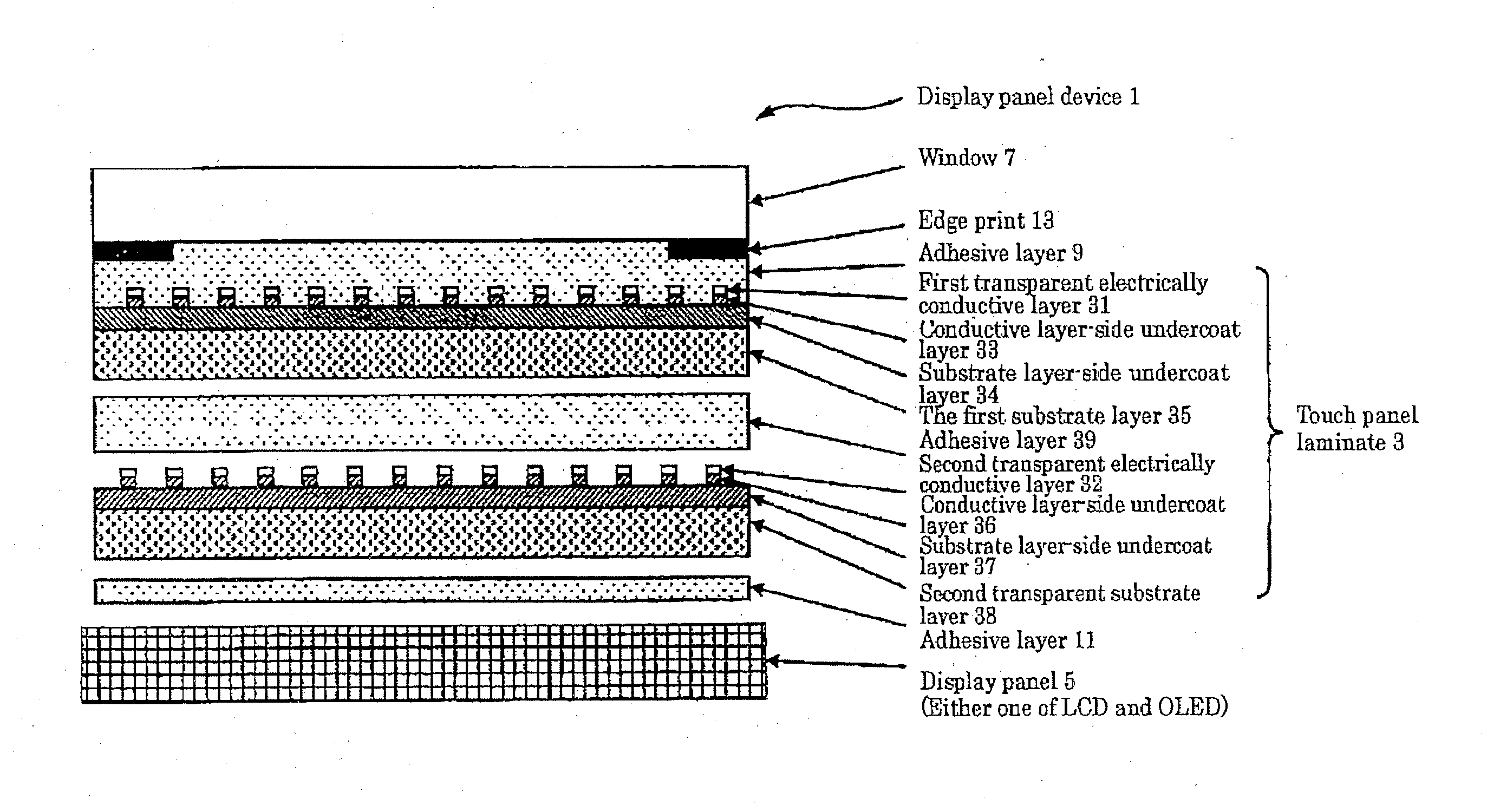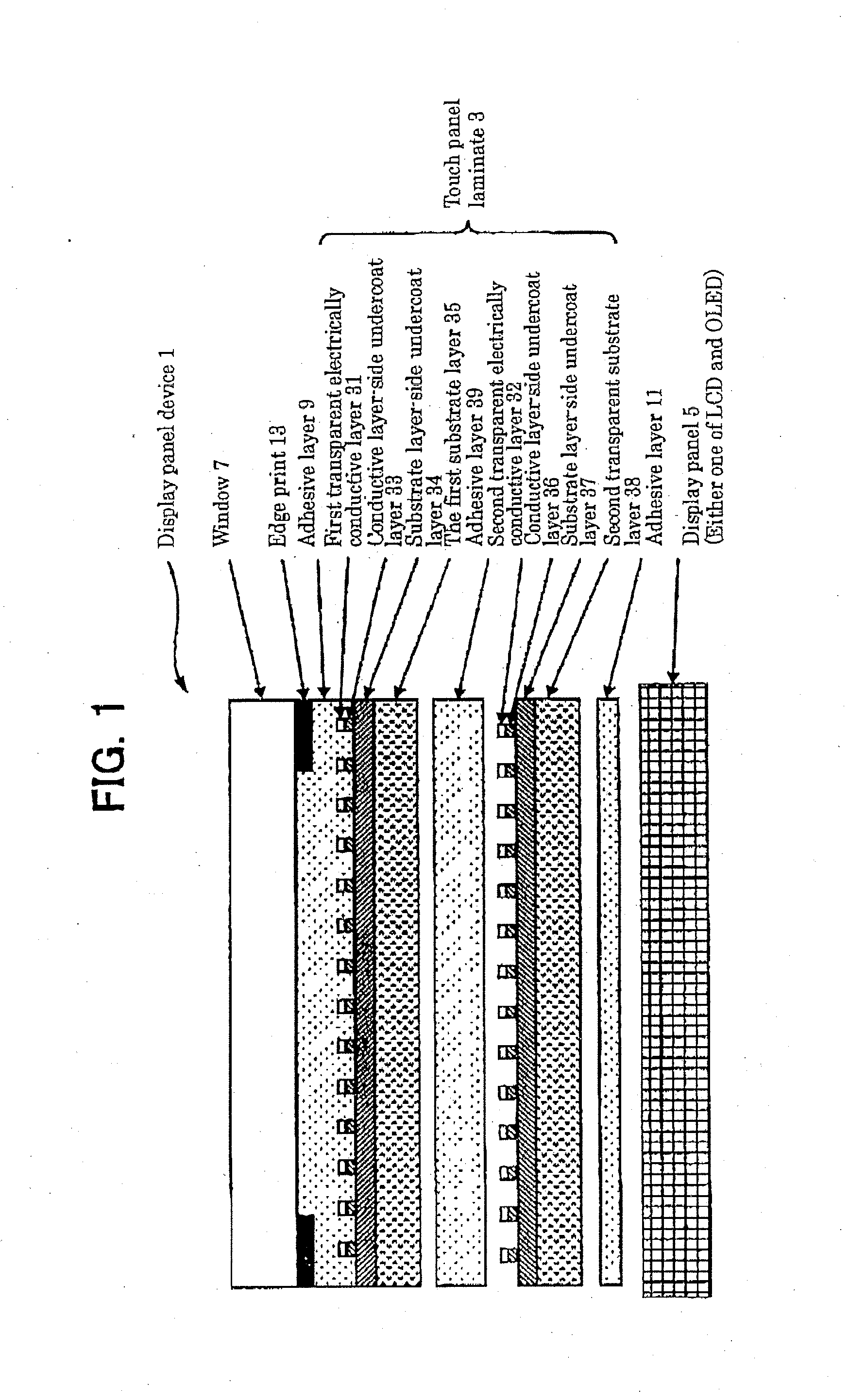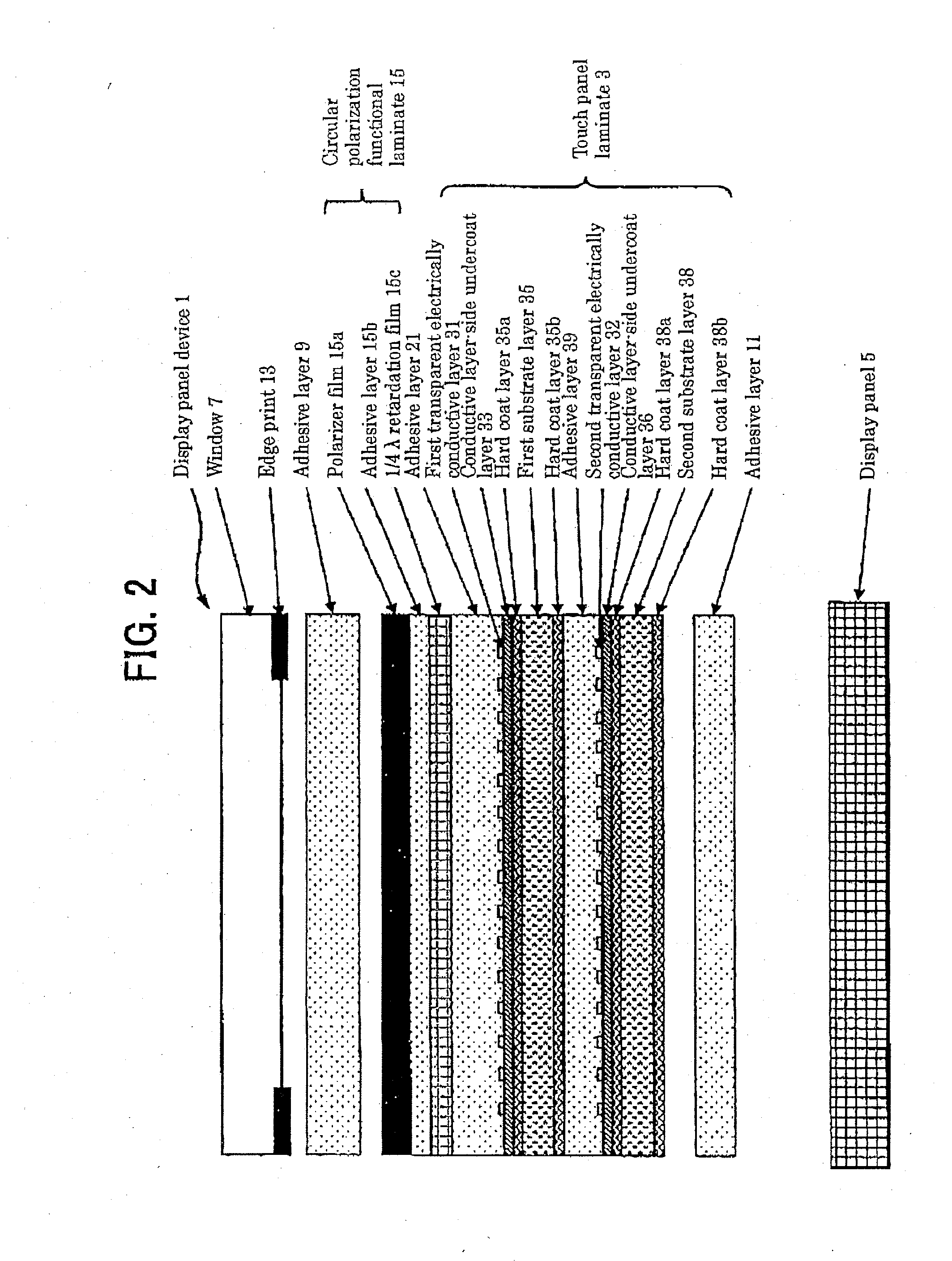Display Panel Device Having Touch Input Function
a technology of touch input and display panel, which is applied in the field of touch input function display panel devices, can solve problems such as display quality deterioration, and achieve the effects of preventing undesirable situations, thin layer configuration, and deterioration in display quality
- Summary
- Abstract
- Description
- Claims
- Application Information
AI Technical Summary
Benefits of technology
Problems solved by technology
Method used
Image
Examples
##ventive example 1
Inventive Example 1
[0116](Formation of Undercoat Layer)
[0117]A thermosetting resin composition containing a melamine resin, an alkyd resin and an organic silane condensate at a weight ratio of 2:2:1 was applied to one surface of a transparent film substrate (refractive index n1=1.65) composed of a 25 μm-thick polyethylene terephthalate film (hereinafter referred to as “PET film”), and then dried and hardened to form a first undercoat layer composed of a 20 nm-thick dielectric layer. In Inventive Example 1, the first undercoat layer had a refractive index n21 of 1.54.
[0118]Then, a second dielectric layer composed of a 10 nm-thick dielectric layer was formed by: diluting silica sol (Colcoat P produced by Colcoat Co., Ltd.) with ethanol to allow a concentration of solid content to become 2 weight %; applying the diluted silica sol to the first undercoat layer by a silica coating method; and drying and hardening the silica sol. The second dielectric layer had a refractive index n22 of 1...
##ventive example 2
Inventive Example 2
[0125]A first undercoat layer composed of a dielectric layer, a second undercoat layer composed of a dielectric layer, and an ITO film were formed on one surface of a PET film to obtain a transparent electrically conductive film, in the same manner as that in Inventive Example 1.
[0126](Patterning of ITO Film)
[0127]A photoresist patterned in stripes was applied to the transparent conductive film of the transparent electrically conductive film, and then dried and hardened. Then, the ITO film was etched by immersing it in a 5 weight % hydrochloric acid solution at 25° C. for 1 minute.
[0128](Patterning of Second Undercoat Layer)
[0129]After etching the ITO film, the second undercoat layer composed of a dielectric film was subsequently etched by immersing it in a 2 weight % sodium hydroxide aqueous solution at 45° C. for 3 minutes, while leaving the laminated photoresist. After completion of the etching, the photoresist was removed.
[0130](Crystallization of ITO Film)
[01...
##ventive examples 3 and 4
Inventive Examples 3 and 4
[0132]In Inventive Examples 3 and 4, two types of transparent electrically conductive films each having a pattern area and a pattern opening were prepared in the same manner as those in Inventive Examples 1 and 2. However, Inventive Examples 3 and 4 were different from Inventive Examples 1 and 2, in that the thickness of the first undercoat layer composed of a dielectric layer was set to 35 nm, and the thickness of the second undercoat layer composed of a dielectric layer was set to 5 nm.
PUM
| Property | Measurement | Unit |
|---|---|---|
| thickness | aaaaa | aaaaa |
| light transmittance | aaaaa | aaaaa |
| light transmittance | aaaaa | aaaaa |
Abstract
Description
Claims
Application Information
 Login to View More
Login to View More - R&D
- Intellectual Property
- Life Sciences
- Materials
- Tech Scout
- Unparalleled Data Quality
- Higher Quality Content
- 60% Fewer Hallucinations
Browse by: Latest US Patents, China's latest patents, Technical Efficacy Thesaurus, Application Domain, Technology Topic, Popular Technical Reports.
© 2025 PatSnap. All rights reserved.Legal|Privacy policy|Modern Slavery Act Transparency Statement|Sitemap|About US| Contact US: help@patsnap.com



